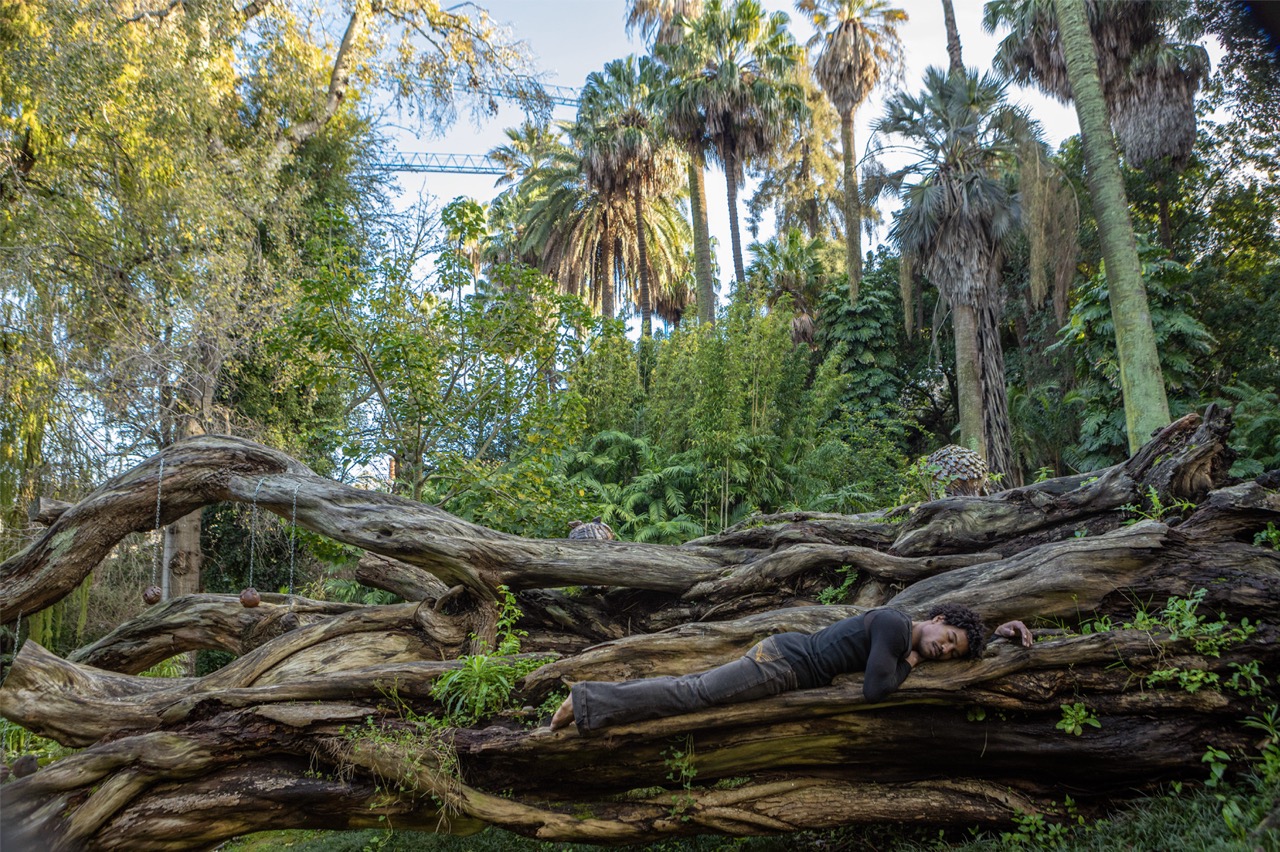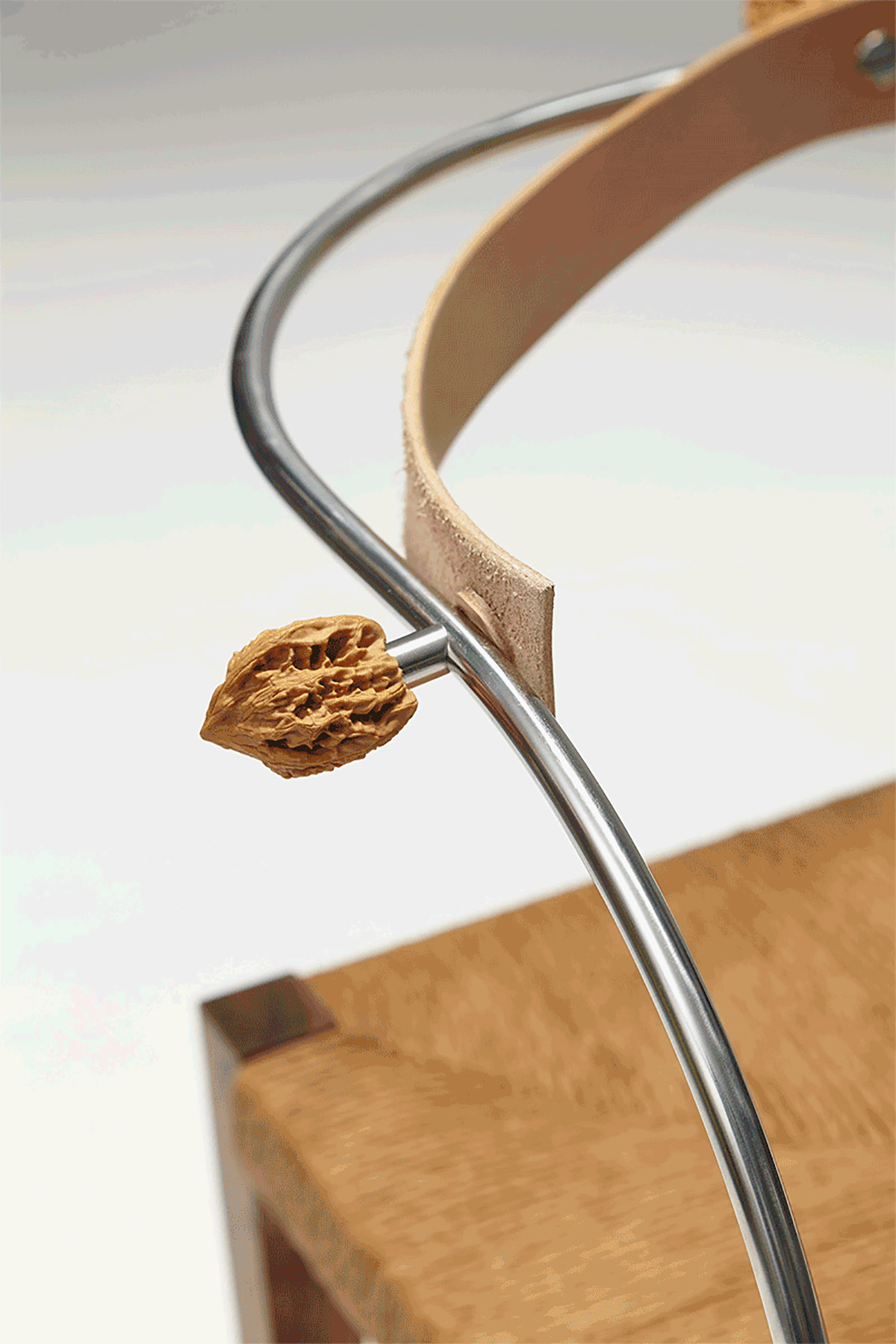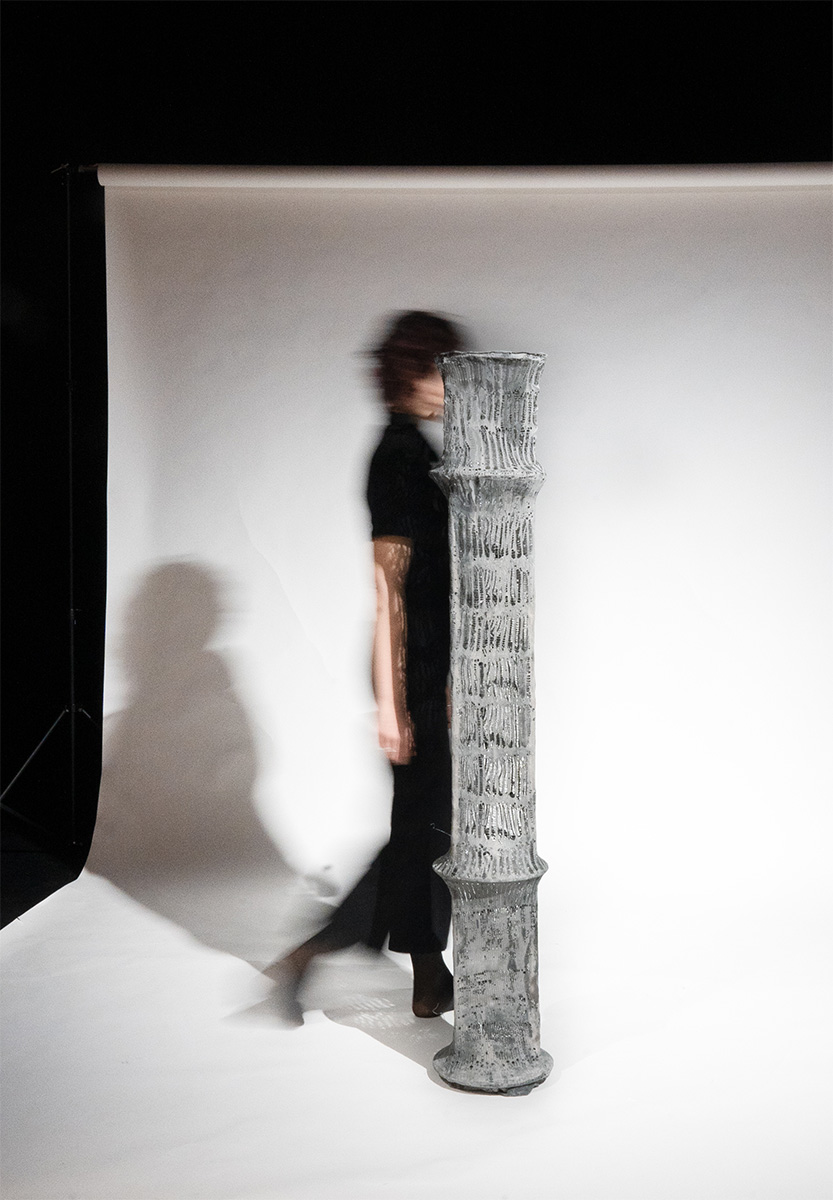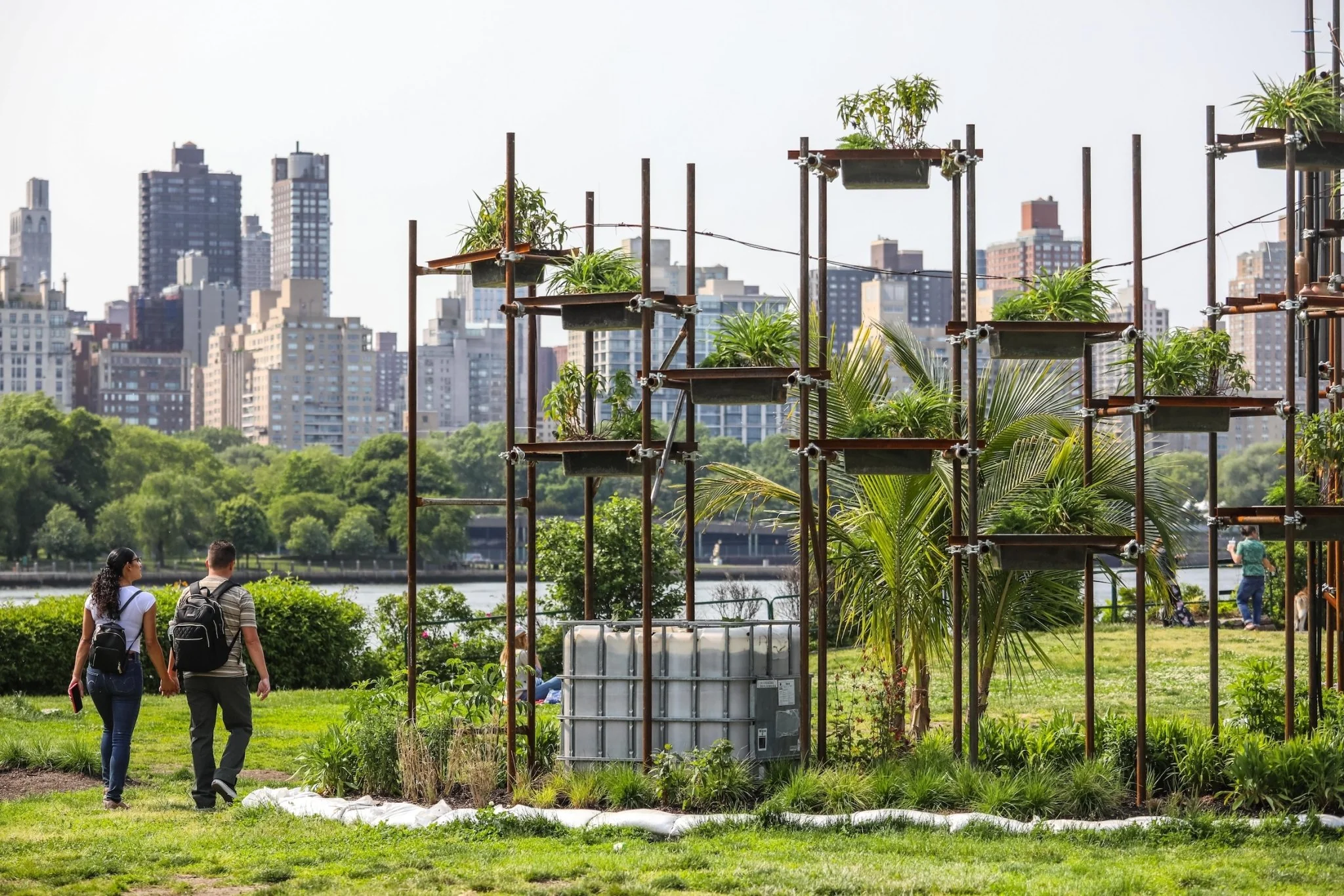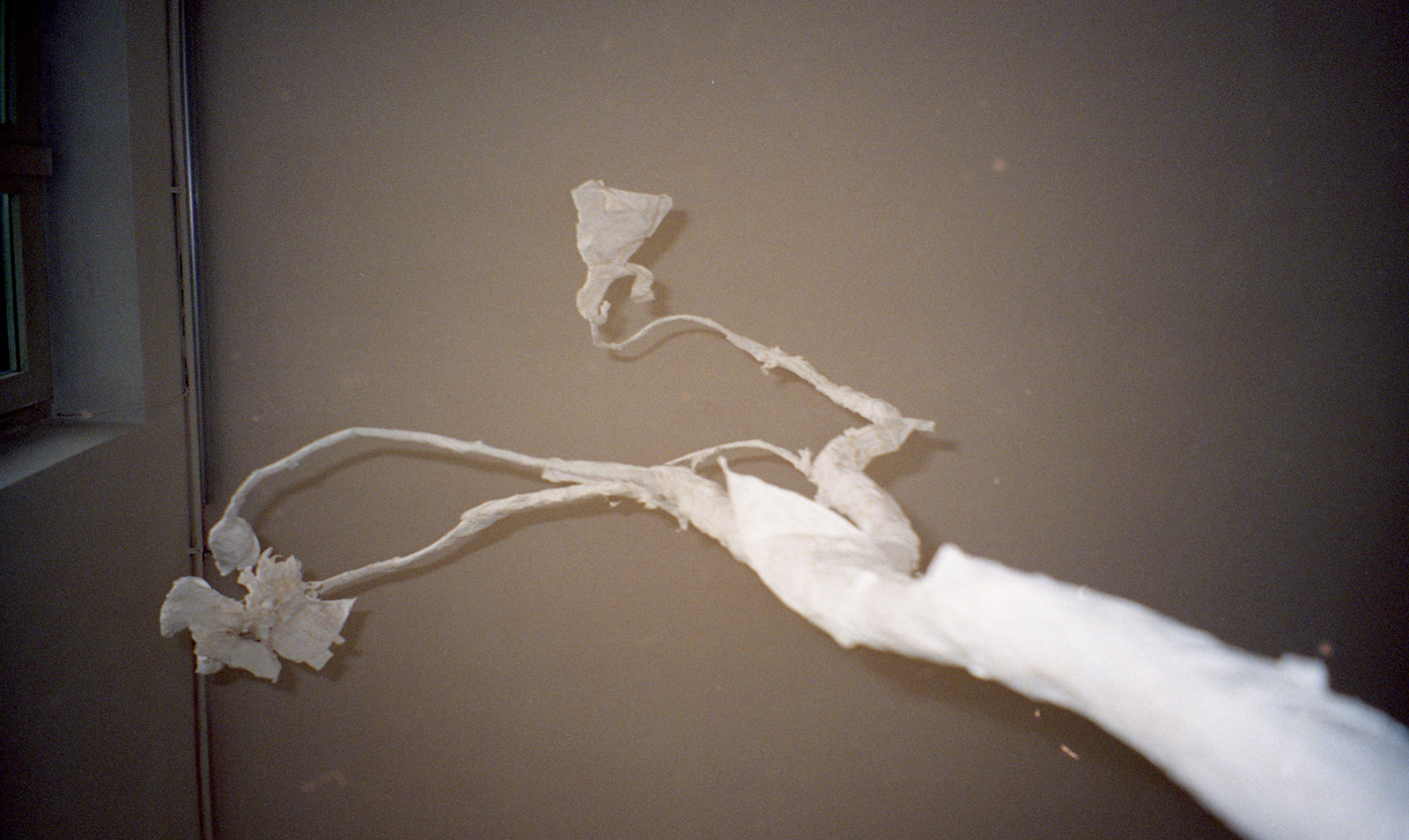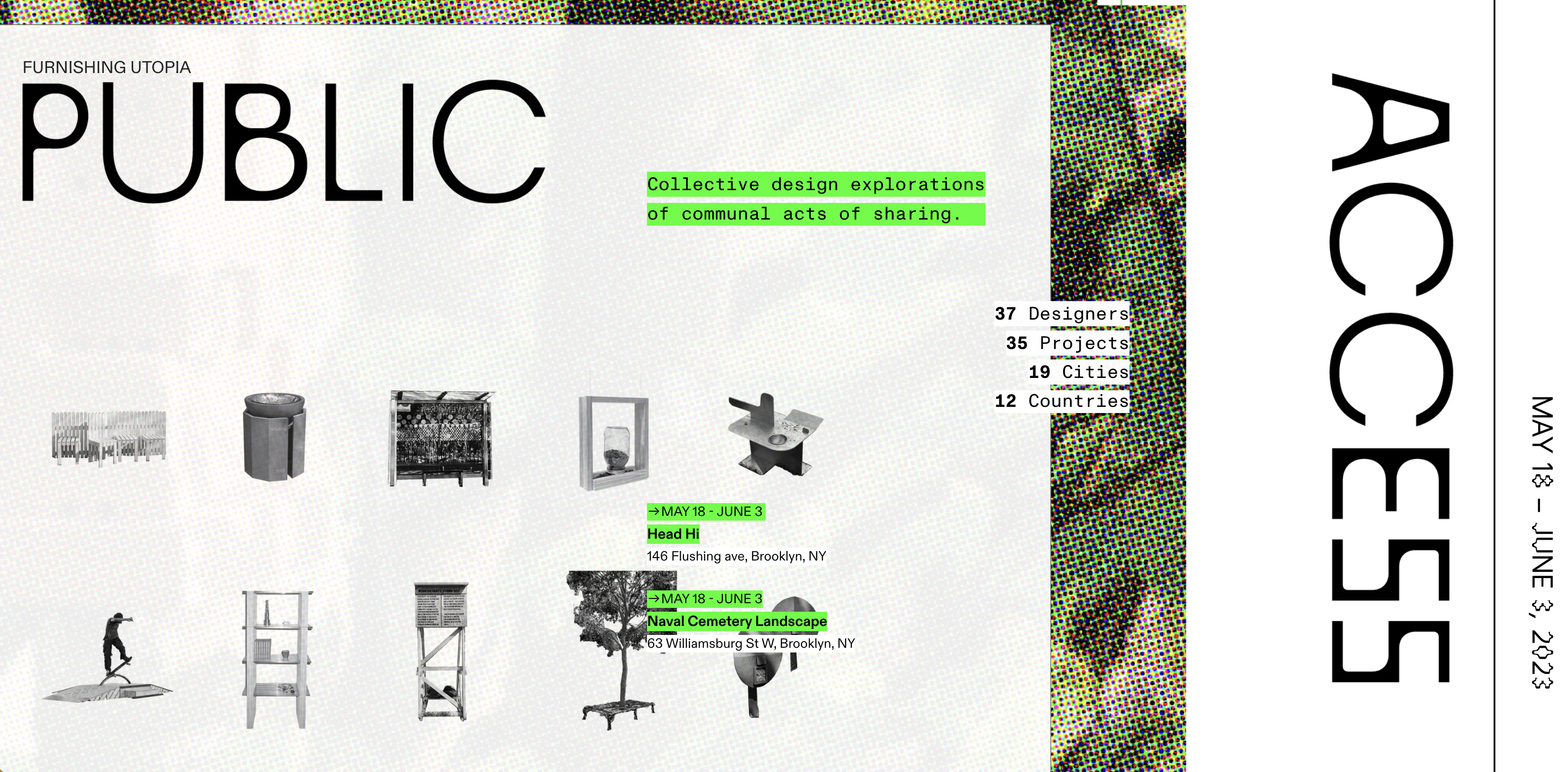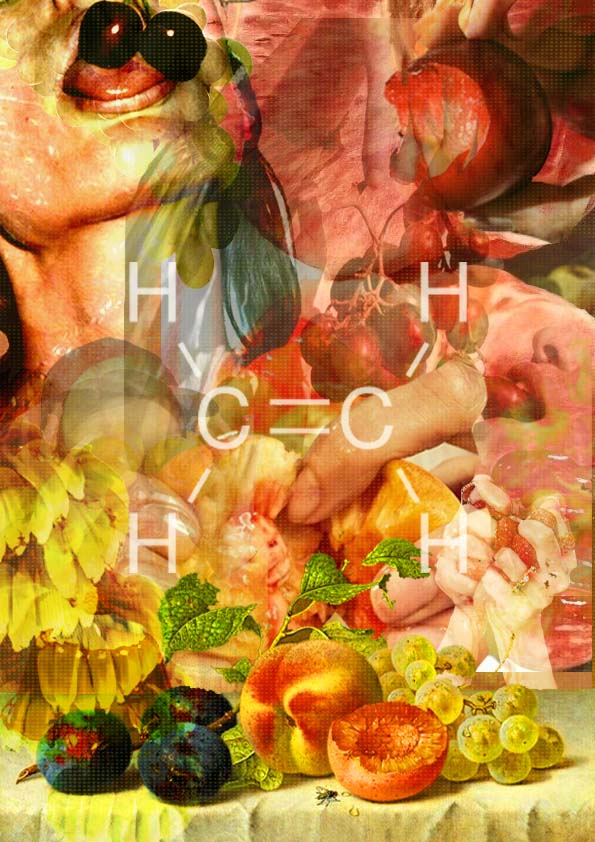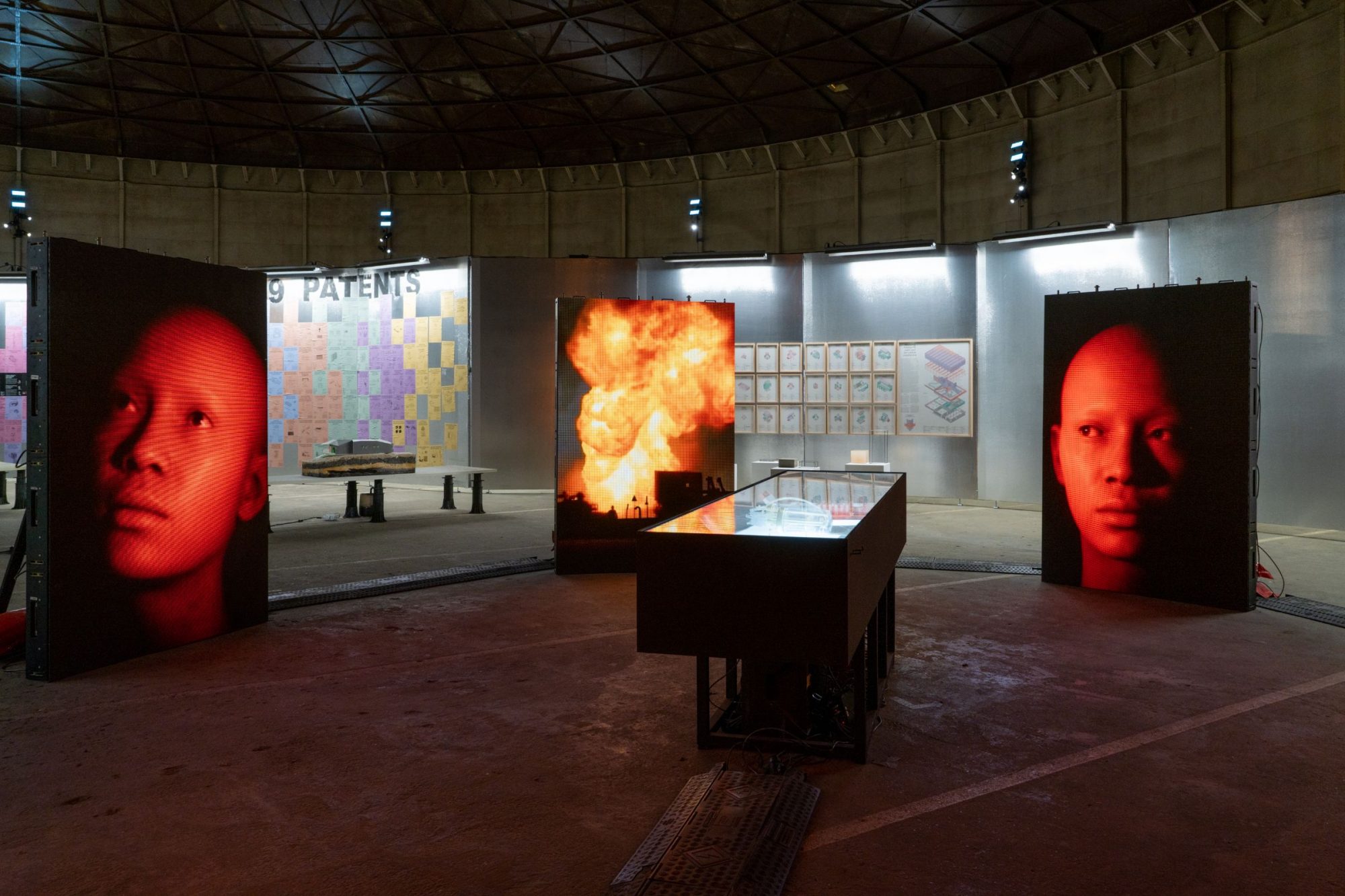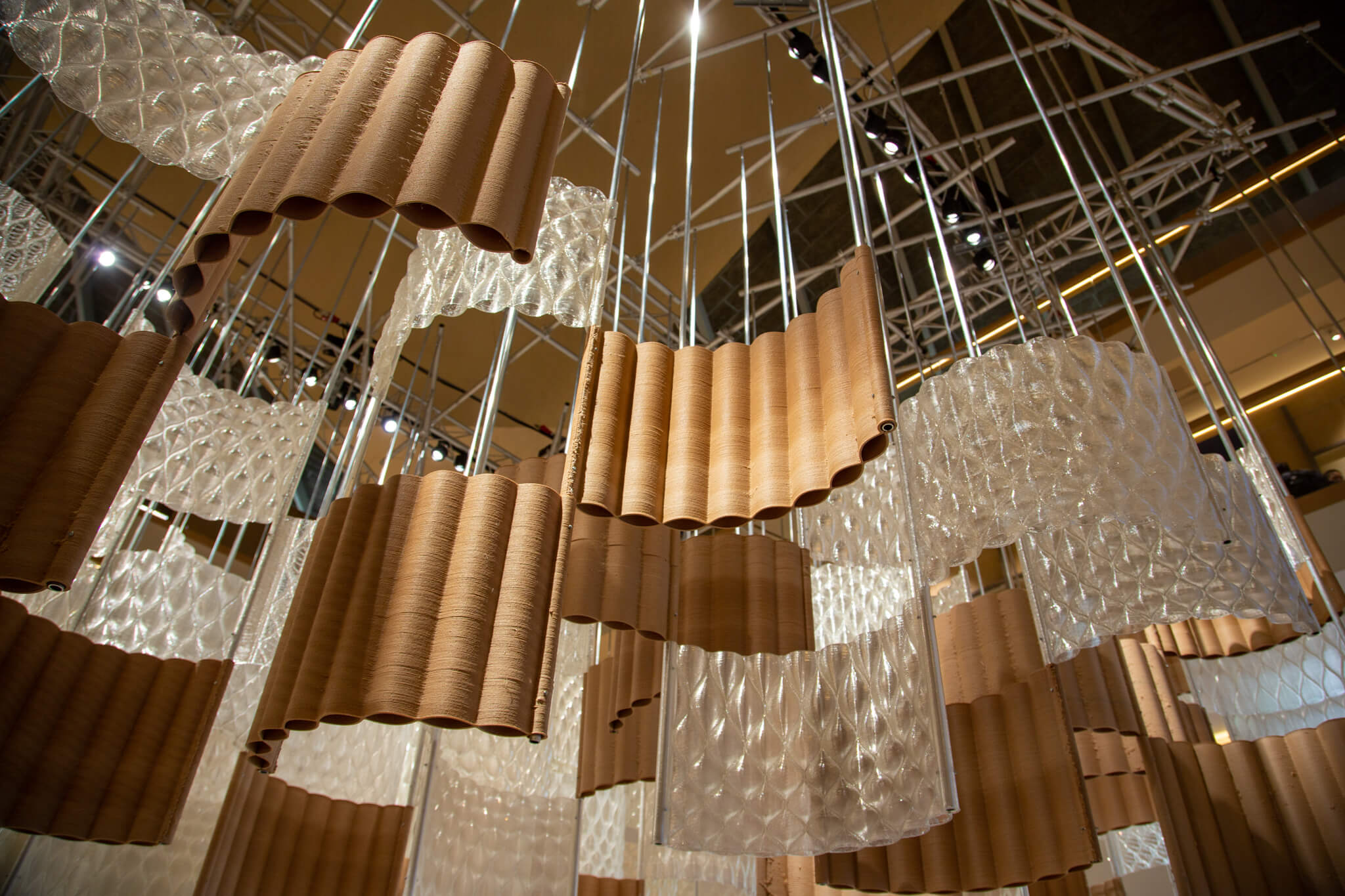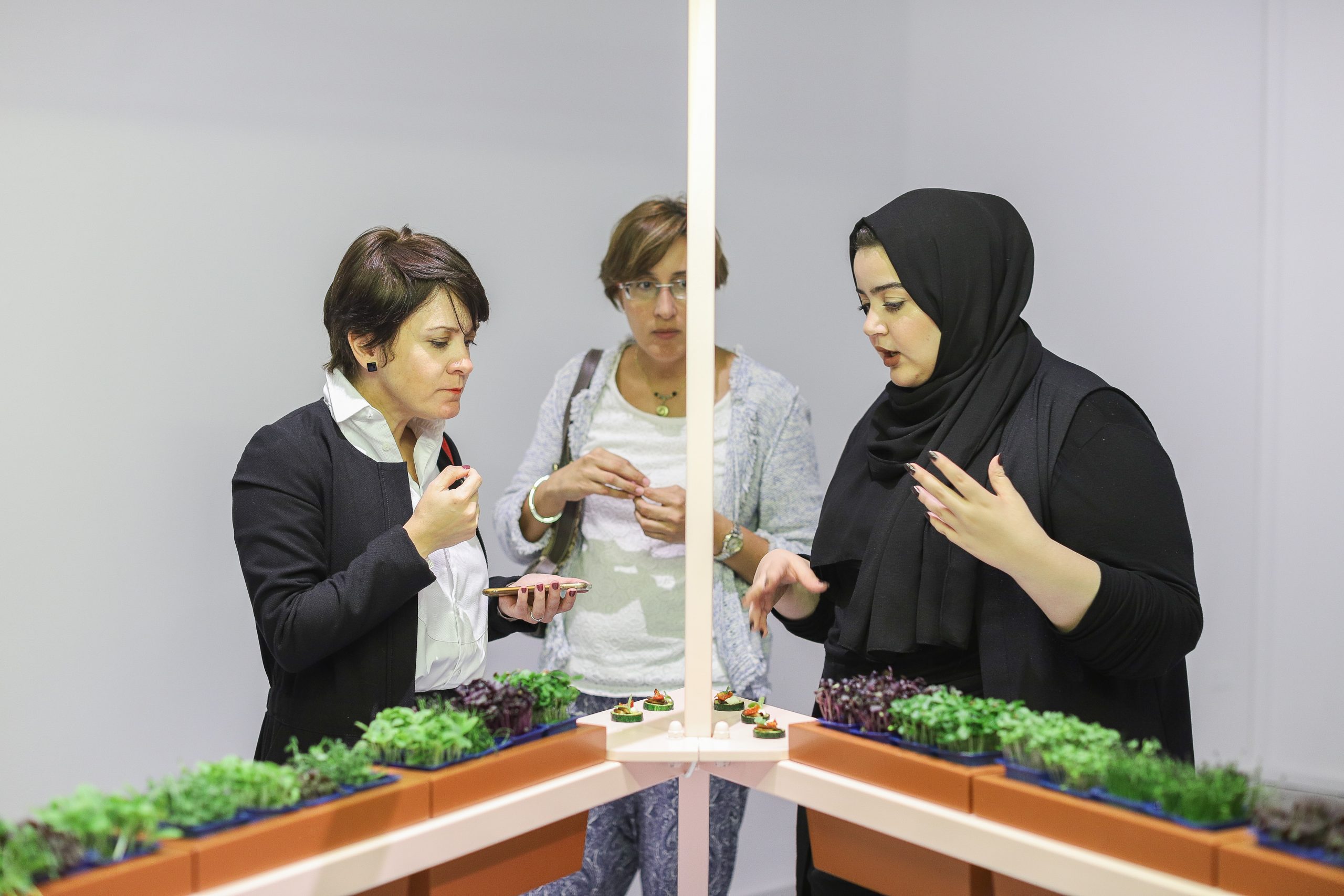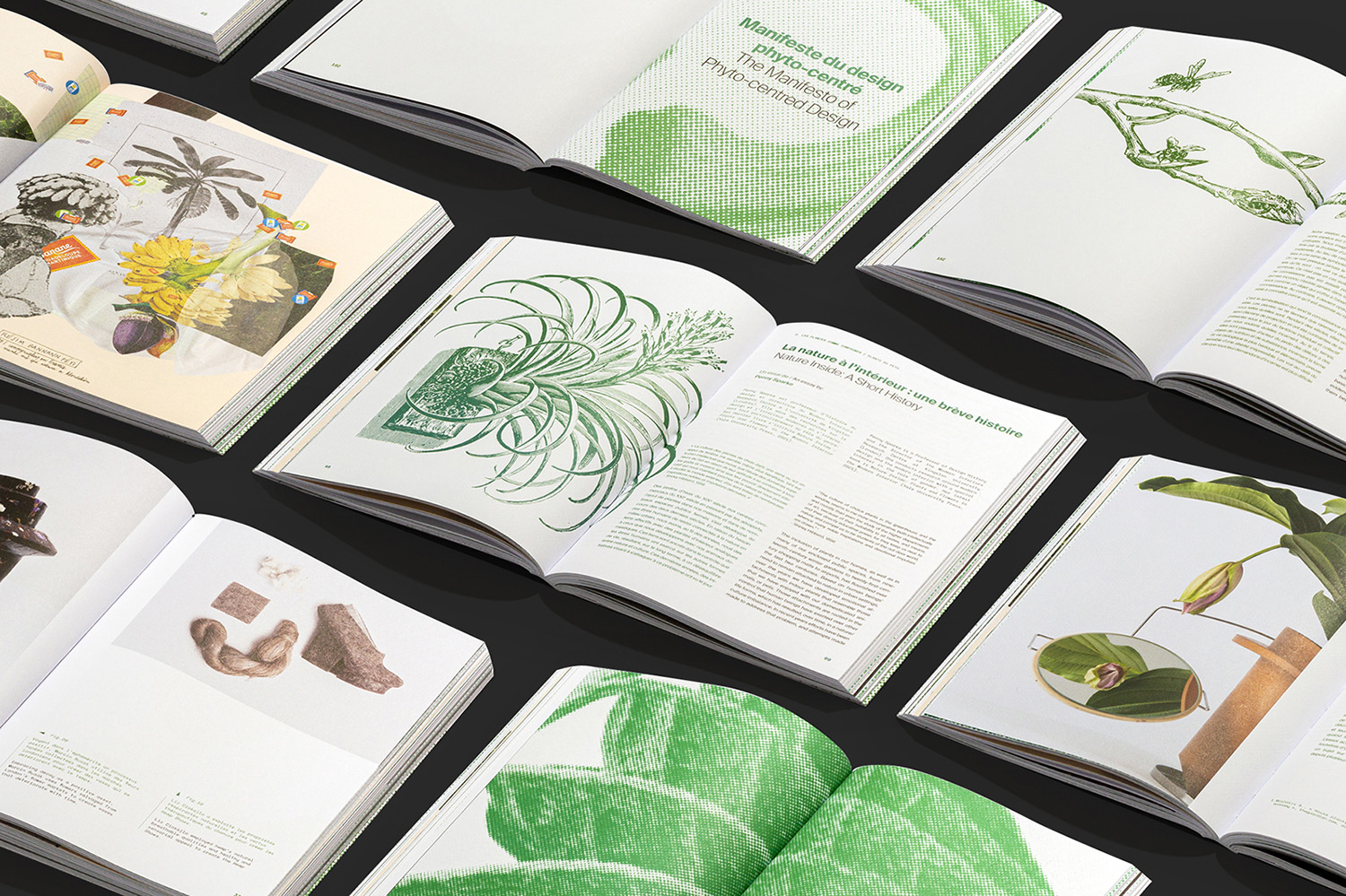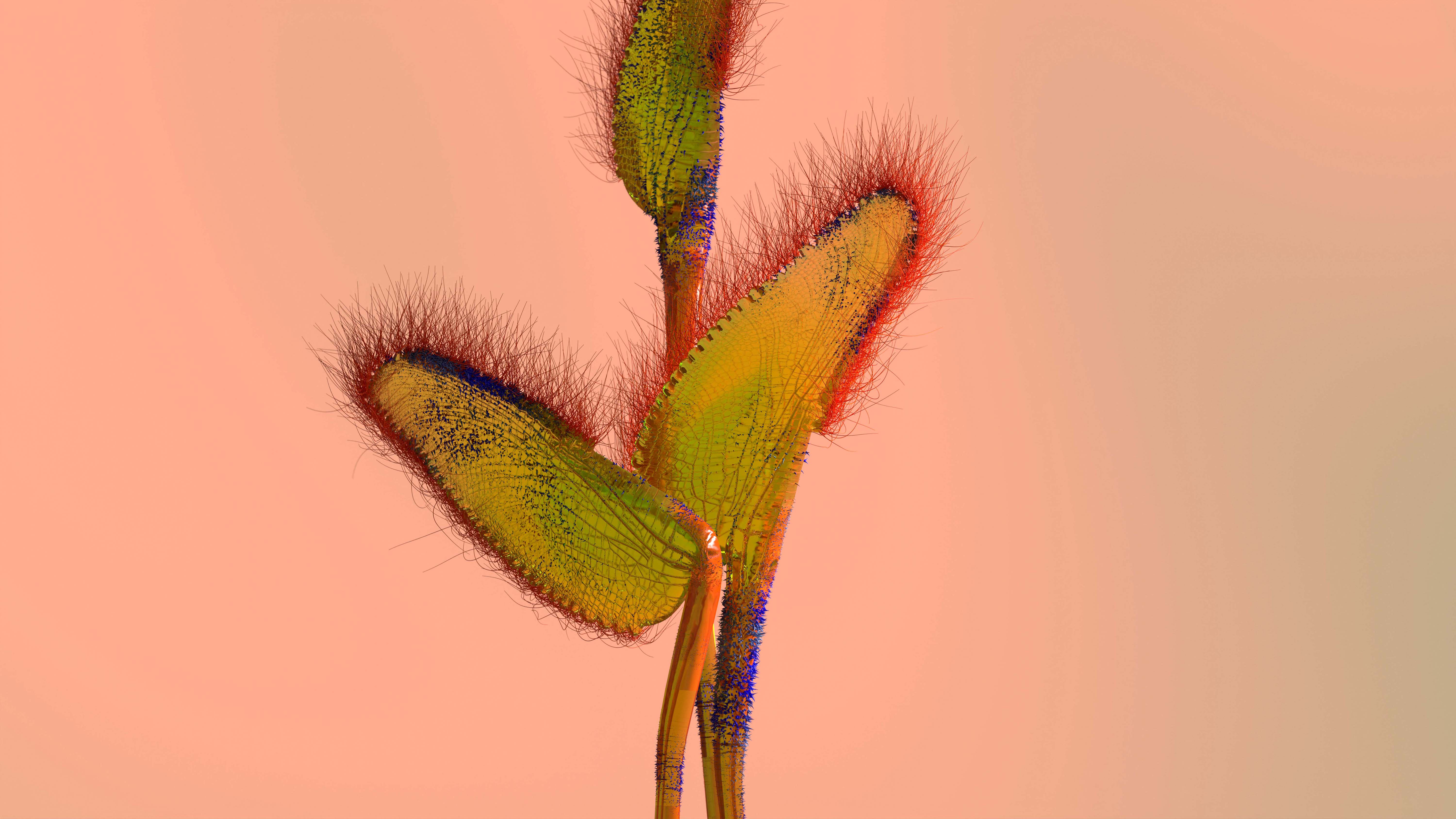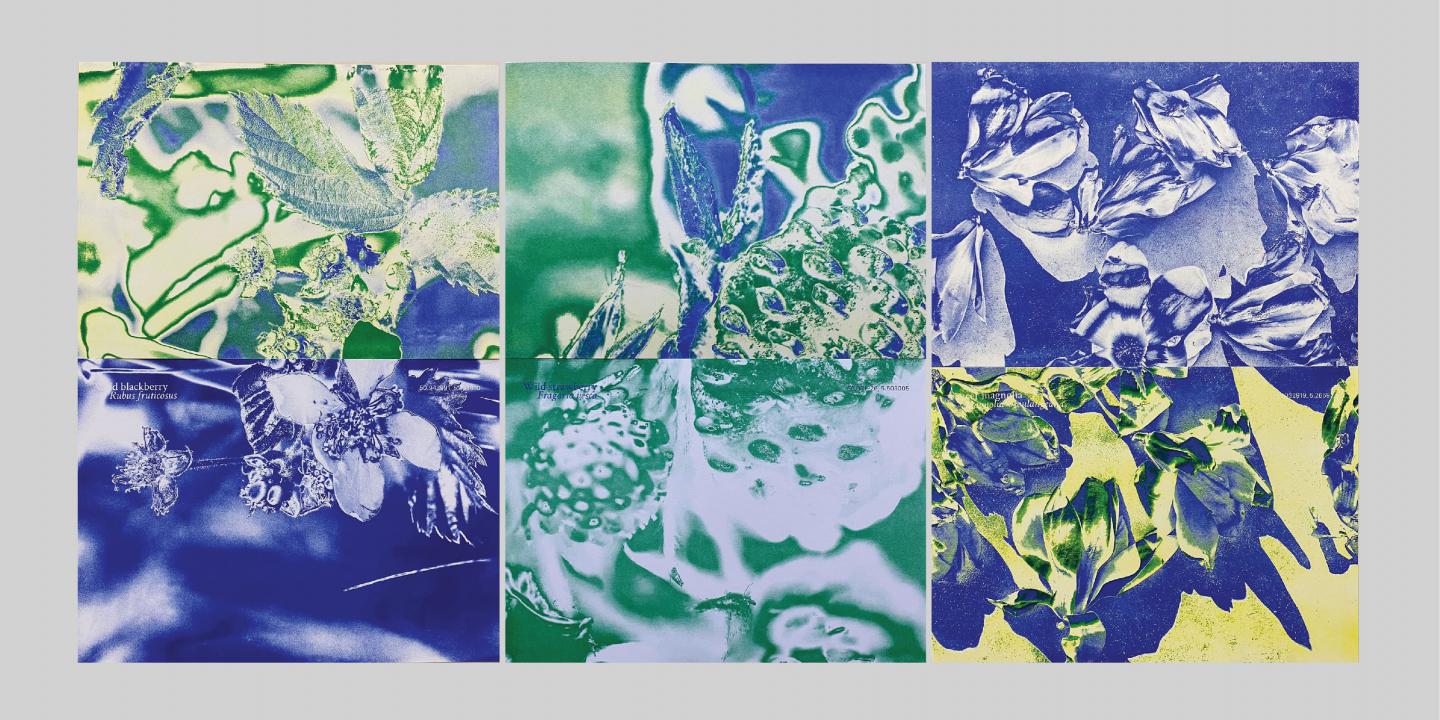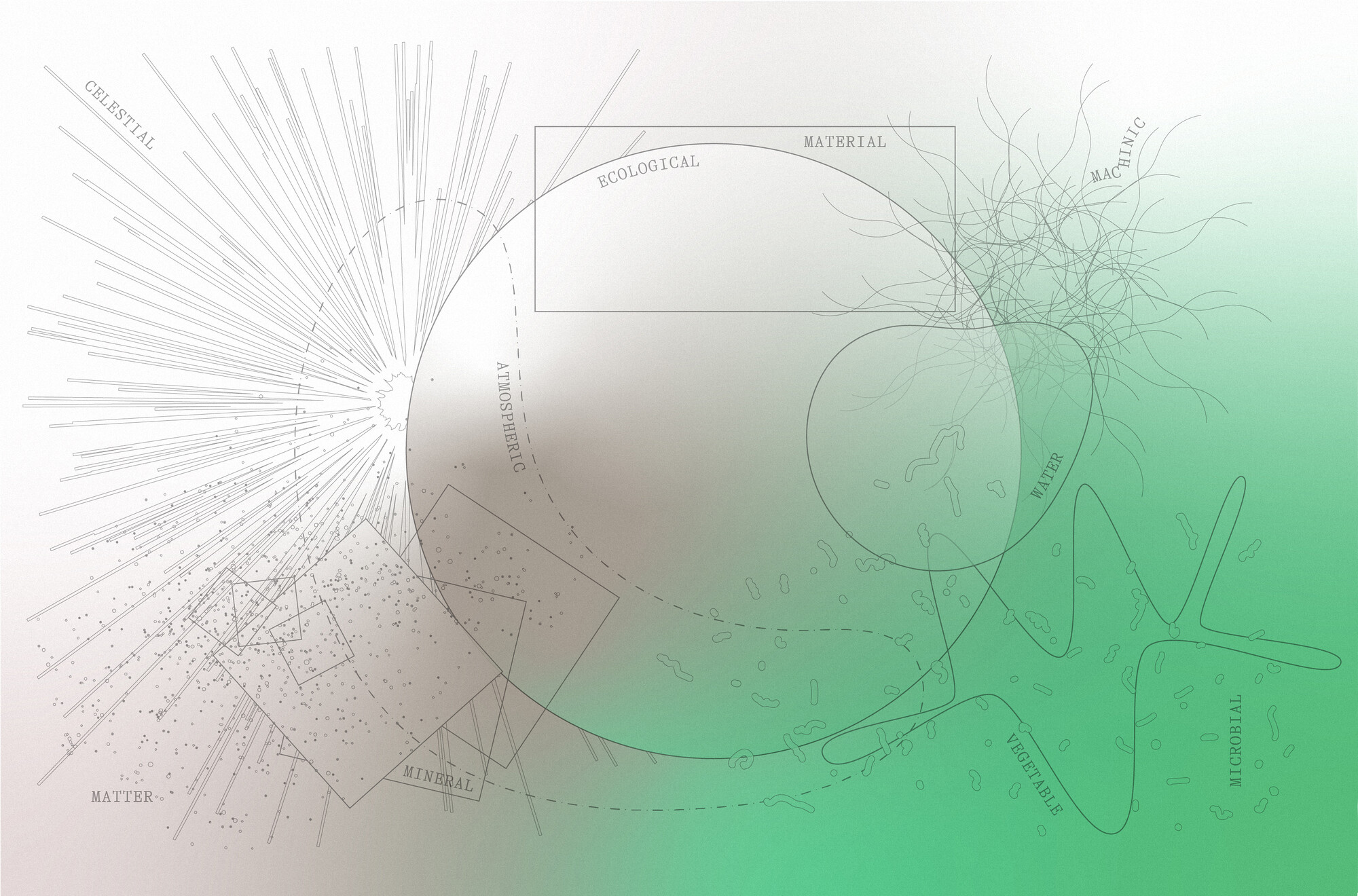Food designer Marije Vogelzang’s recent Seeds exhibition at the Toronto Interior Design Show takes participants on the symbolic journey of a seed growing, prompting them to reflect on the simple acts of living. Presented by Caesarstone, the exhibition is structured inside a labyrinth of honey-comb-shaped pods, outlined by groups of colorful ribbons. Vogelzang hopes that the multisensory, interactive project will encourage people to focus on their senses, exploring the way they experience the world around them.
Participants begin their journey through Seeds, as the name suggests, by choosing a seed to ingest. An audio device then guides individuals through the exhibit, speaking to them as the seed that they’ve consumed. Each geometric pod of the installation contains a different activity, engaging with the story that the seed is telling.
Vogelzang explained to MOLD that, “There’s a pod where you catch one drop of water, a pod where you grind seeds for flour and receive a hot baked piece of flatbread. There’s a pod where you have a tiny meditative moment imagining you’re a growing seed yourself. There’s a pod where you write down memories on bread in flour, a pod where you are hand-fed a filled pasta-shell and experience a practice of ‘inner haptics’—using your mouth and tongue to expose textures in your mouth.”
The step-by-step, directed process of Seeds presents a stark contrast with what Vogelzang views as the problem with many design fairs and exhibitions; she points out that, “People tend to rush and ignore their senses. A lot of design is just to look at. I wanted to create something that appeals to the whole that you are and makes you connected to life a bit before you rush off again to the state of being walking brains with eyes.” The multisensory aspects of Seeds, including several specifically designed scents, keep participants engaged and alert throughout their experience.
Through the intersection of multisensory design and food experiences, Vogelzang is pushing individuals to appreciate life. Speaking with MOLD, she cited her intention to help people with “understanding time, understanding grow and decay and appreciating the senses.” Seeds reflects this ebb and flow of living—both symbolically and literally—as people explore the way they use their senses, and the simple process of a seed’s growth.





